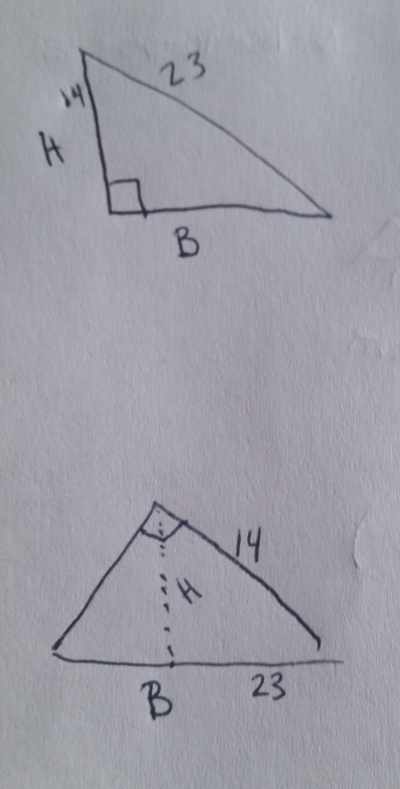The first picture shows the two possible ways to solve the area of this triangle. The first way is the way that we are solving, the second is the other possible way. As you can see, we have to solve for an unknown side either way we decide to solve (the second way would take an extra step).
The second picture is actually solving the problem. The 55 degree angle is located between 14 (a side) and 23 (hypotenuse). Using this angle, side 14 is the adjacent side. Our unknown side X is adjacent to angle θ. We find this unknown angle by subtracting the two known angles (90 and 55) from 180. This gives us 35 for angle θ. Now you can solve using cos.
However, this makes you go through the extra work of finding angle theta. If we just use the known angle, we can use sin to find the unknown side and skip this extra step (as
@orgoman22 showed).
Hope this helps and let me know if you have any questions.


